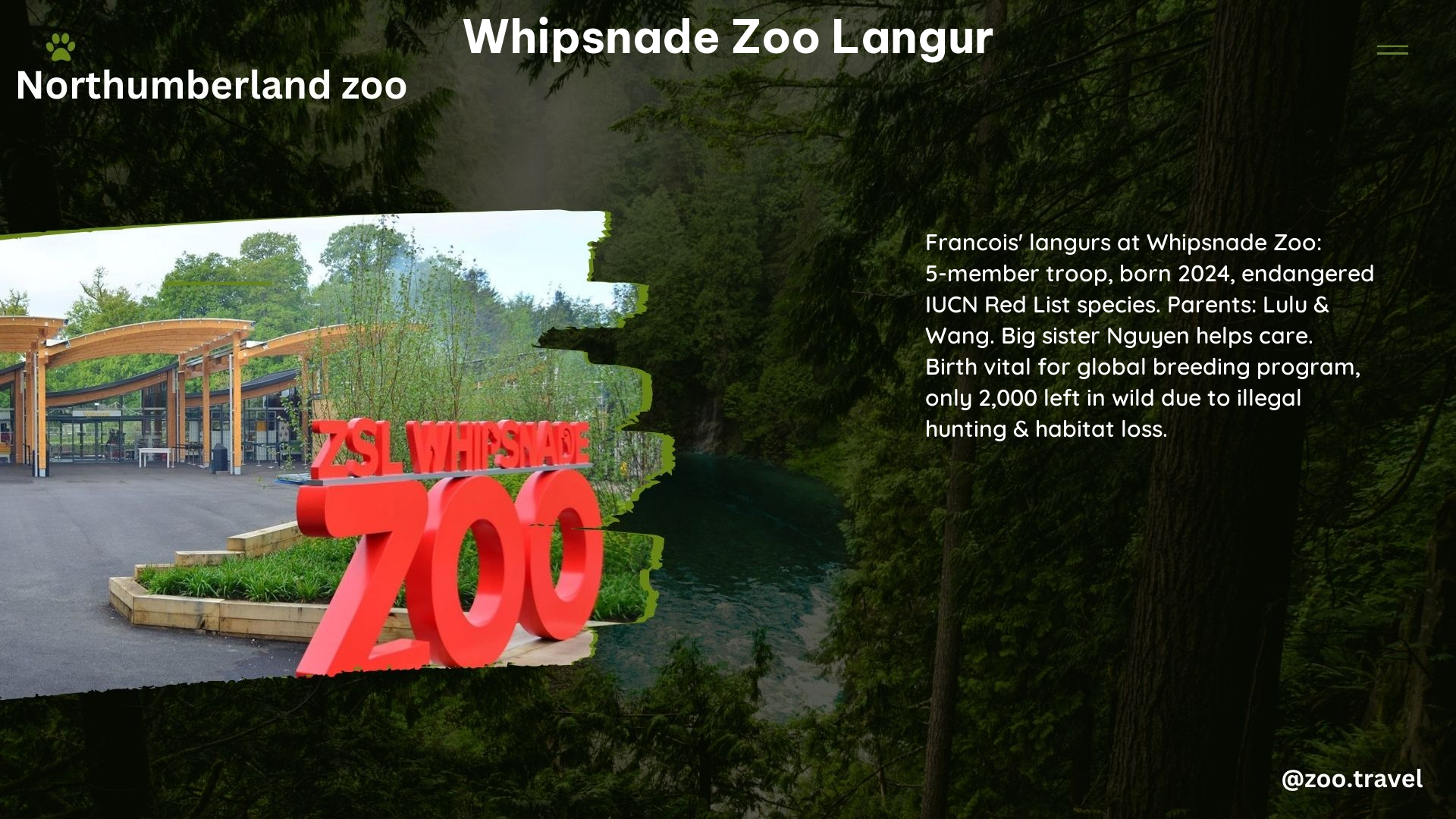Whipsnade Zoo in Bedfordshire, United Kingdom, is home to a troop of François’ langurs, a species listed as endangered on the International Union for Conservation of Nature Red List of threatened species. The zoo’s François’ langur habitat is significant for conservation efforts, as the population of these primates continues to decline in the wild due to illegal hunting for their meat and traditional medicinal purposes.
The Newest Addition to the Whipsnade Zoo Langur Troop
The zoo’s François’ langur troop includes Lulu, the mother of the newest addition, who gave birth to a vibrant orange baby on February 17, 2024. This birth is being celebrated as a “ray of sunshine” and a “beacon of hope” for the endangered species. The baby’s striking orange coloring is a natural adaptation, making it easier for keepers and visitors to spot the newest addition among the troop. Over time, the hair will fade to black.
The Whipsnade Zoo Langur Habitat

At Whipsnade Zoo, the François’ langur habitat is part of the brand-new Monkey Forest, an immersive experience that transports visitors to the forests of southeast Asia while highlighting the endangered François’ langur troop. The habitat is also home to Sulawesi crested macaques, Anoa (dwarf buffalo), and Babirusa (an ancient species of pig with long, curved tusks).
The Importance of the Whipsnade Zoo Langur Conservation Efforts
The birth of the new François’ langur baby is particularly significant because it is part of the European Endangered Species Breeding Programme, an international conservation initiative aimed at boosting the numbers of threatened species. ZSL, the conservation charity behind Whipsnade Zoo, works across the world to tackle the illegal wildlife trade, including in Thailand, which is a major transport point for the illegal wildlife trade in Southeast Asia.
Unique Facts about the Whipsnade Zoo Langur
- François’ langurs are known for their distinctive black and white coloration, with the adults having a black body and white face, hands, and feet.
- These langurs are arboreal, meaning they spend most of their time in the trees, and they are known for their agility and acrobatic skills.
- They live in social groups, with a dominant male leading the troop and several females and their offspring.
- François’ langurs are native to the limestone forests of southern China and northern Vietnam, and their population has declined due to habitat loss and hunting.
Visitor Experience at the Whipsnade Zoo Langur Habitat
Visitors to the Whipsnade Zoo can observe the François’ langurs in their natural-like habitat, which is designed to mimic the limestone forests of their native range. The habitat features lush vegetation, climbing structures, and a waterfall, providing the langurs with a stimulating and enriching environment.
In addition to observing the langurs, visitors can learn about the conservation efforts at Whipsnade Zoo and the importance of protecting endangered species like the François’ langur. The zoo’s educational programs and signage provide visitors with information about the langurs’ biology, behavior, and the threats they face in the wild.
Conclusion
Whipsnade Zoo’s François’ langur habitat is a crucial part of conservation efforts for this endangered species. The birth of the new baby is a cause for celebration and a symbol of hope for the species’ future. Visitors to the zoo can learn about the François’ langurs and contribute to their conservation by supporting the European Endangered Species Breeding Programme.
References:
– Whipsnade Zoo – François’ Langur
– BBC News – Whipsnade Zoo Welcomes Endangered Langur Baby
– Whipsnade Zoo – Naming Competition for First Baby Born in Monkey Forest
– BIAZA – A Bright New Addition at Whipsnade Zoo
– Whipsnade Zoo – First Pictures of Endangered François’ Langur Baby Born
